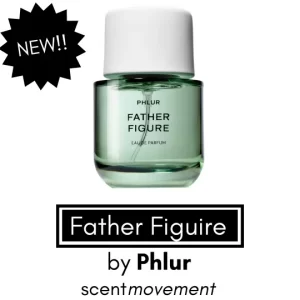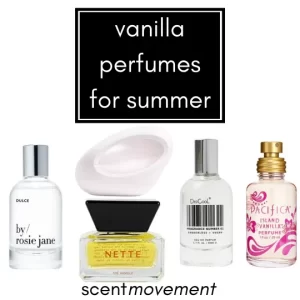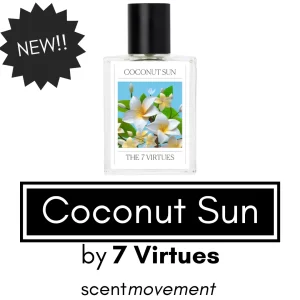
New! Phlur Father Figure
Everything you need to know about Phlur’s newest perfume! Father Figure.

LVMH, or Louis Vuitton Moët Hennessy, is a name that rings with an echo of luxury, elegance, and opulence. The world’s largest luxury goods conglomerate, LVMH has cemented its legacy in the realms of fashion, wine, and, notably, perfumery. Let’s unravel the scented journey of LVMH’s perfume brands.
A perfume conglomerate is a large company that owns multiple brands or subsidiaries involved in the business of creating and selling perfumes. These conglomerates are usually involved in various stages of the perfume manufacturing and selling process, such as sourcing raw materials, fragrance creation, packaging, marketing, distribution, and retail.
Perfume conglomerates often have a diverse portfolio of brands, ranging from mass-market fragrances to luxury and niche perfumes, allowing them to cater to a wide spectrum of consumers. Each brand under the conglomerate typically maintains its unique identity and creative direction to appeal to its specific target market.
LVMH (Louis Vuitton Moët Hennessy) is an example of a perfume conglomerate, with a portfolio that includes perfume brands like Christian Dior, Guerlain, Givenchy, and Marc Jacobs among others. Other perfume conglomerates include Estée Lauder Companies, which owns brands like Tom Ford and Jo Malone, and Coty Inc., which owns brands like Calvin Klein, Marc Jacobs, and Hugo Boss.
Louis Vuitton Moët Hennessy, better known as LVMH, is a world-renowned luxury goods conglomerate with a rich history that spans multiple centuries and includes some of the most iconic brands in fashion, wine and spirits, perfumes, watches, and jewelry.
Louis Vuitton: The roots of LVMH can be traced back to the mid-19th century when Louis Vuitton, a French box-maker, started his own business in Paris in 1854, specializing in packing fashions in crates. His son, Georges Vuitton, expanded the company’s offerings to include travel bags and accessories, and created the iconic LV monogram.
Moët & Chandon and Hennessy: The Moët & Chandon and Hennessy story begins in the 18th century. Moët & Chandon, the champagne house, was established in 1743 by Claude Moët, and Hennessy, the renowned cognac producer, was founded in 1765 by Richard Hennessy. Over the centuries, both brands gained worldwide recognition for their quality and refinement.
The Formation of LVMH: The conglomerate, as we know it today, was formed in 1987 through a merger between Louis Vuitton and Moët Hennessy. This merger was largely driven by a desire to consolidate their businesses and strengthen their position in the global luxury goods market. The resulting entity, LVMH, has since become a dominant force in the luxury sector.
Expansion and Growth: Since its formation, LVMH has steadily grown its brand portfolio through strategic acquisitions and partnerships. Notable additions to the LVMH family include Italian fashion house Fendi (1999), Swiss watchmaker TAG Heuer (1999), and American fashion brand Marc Jacobs (1997). In 2019, LVMH made headlines with its acquisition of American jewelry brand Tiffany & Co., further solidifying its position in the global luxury market.
Today’s LVMH: Today, LVMH is the world’s largest luxury goods company, boasting a portfolio of 75 distinguished brands and a presence in over 130 countries. Bernard Arnault, one of the richest people in the world, is the company’s CEO.
LVMH’s long history and its steady growth over the years demonstrate its commitment to craftsmanship, creativity, and innovation. Each of its brands represents a rich heritage and carries forward the company’s legacy of delivering exceptional experiences to luxury consumers around the world.
LVMH has an extensive perfume portfolio that spans across several distinguished brands, each with its unique heritage, style, and olfactory philosophy.
1. Christian Dior Perfumes: Christian Dior’s fragrances are recognized for their rich and luxurious blends, embodying the spirit of the house’s haute couture. Classics like Miss Dior, J’adore, and Sauvage continue to hold their place as iconic scents.
2. Givenchy Parfums: Givenchy’s fragrance line mirrors the maison’s cutting-edge fashion. It fuses elegance and audacity, reflecting in beloved scents like L’Interdit and Gentleman Givenchy.
3. Guerlain: One of the oldest perfume houses in the world, Guerlain is known for its timeless fragrances that encapsulate art, culture, and elegance. Iconic creations include Shalimar, L’Heure Bleue, and Mitsouko.
4. Kenzo Parfums: Kenzo’s fragrance line blends audacity with poetic softness. Flower by Kenzo and Kenzo World are among the brand’s popular scents, each telling a unique story of nature and emotions.
5. Maison Francis Kurkdjian: A beacon of modern luxury perfumery, Maison Francis Kurkdjian is known for its unique olfactory visions. The brand’s Baccarat Rouge 540 is a worldwide bestseller, renowned for its radiant and sophisticated aroma.
6. Marc Jacobs Fragrances: Marc Jacobs perfumes embody the designer’s quirky, yet elegant style. Signature fragrances such as Daisy and Decadence are celebrated for their distinctive, youthful, and fresh characteristics.
7. Parfums Givenchy: Another fragrance arm of the Givenchy brand, Parfums Givenchy crafts bold and innovative scents that have graced the perfume industry for decades. Notable fragrances include Amarige and Very Irrésistible.
8. Perfumes Loewe: With a deep-rooted Spanish heritage, Perfumes Loewe offers a diverse range of sophisticated scents. Its best-selling creations include Solo Loewe and Aura Loewe.
9. Acqua di Parma: An embodiment of Italian elegance, Acqua di Parma’s fragrances like Colonia and Blu Mediterraneo radiate lightness and refinement, capturing the charm of Italy.
By housing these perfume brands, LVMH captures a diverse audience worldwide, offering a wide variety of fragrances that range from the classic and timeless to the modern and innovative. It’s the diverse palette of these brands and their distinctive perfumes that make LVMH a significant player in the global perfume market.
As a conglomerate, LVMH has significant influence and control over the brands within its portfolio. The level of this control and influence varies based on a variety of factors, including the specific terms of the acquisition or partnership agreement, the strategic goals of LVMH and the individual brand, and the brand’s market performance.
Here are some key areas where LVMH typically exerts its power over its brands:
Strategic Decisions: LVMH often guides the overall strategic direction of its brands, including decisions related to brand positioning, target markets, expansion plans, and product development.
Financial Management: The conglomerate oversees financial management, including setting budgets, managing revenue targets, and making major investment decisions.
Operational Oversight: LVMH can influence operational matters, such as supply chain management, production processes, and quality control standards.
Leadership Appointments: LVMH often has the power to appoint key leadership roles within its brands, such as CEO or Creative Director. These appointments can significantly shape the brand’s direction and performance.
Marketing and Sales: LVMH typically guides the marketing and sales strategies of its brands, including decisions related to advertising campaigns, pricing, distribution channels, and customer relationship management.
Human Resources: The conglomerate can influence HR policies and procedures, including hiring practices, compensation and benefits, and employee development programs.
In essence, LVMH’s power over its brands extends to virtually all key aspects of the business. However, it’s worth noting that LVMH often preserves the unique identity and creative autonomy of its brands to ensure they continue to appeal to their specific target audience and maintain their unique value proposition in the market. The conglomerate’s role is primarily to provide the resources, guidance, and infrastructure needed for its brands to thrive.
The decision for a brand to join a conglomerate is a strategic one that comes with both advantages and disadvantages. It is influenced by several factors including the brand’s current market position, growth ambitions, and financial health. Let’s discuss the potential pros and cons of such a decision.
Pros of Brands Joining Conglomerates
Financial Support: Joining a conglomerate often brings financial stability and access to more resources, which can fuel the brand’s growth, expansion, and innovation efforts.
Shared Expertise: Being part of a conglomerate can allow a brand to leverage the collective experience, expertise, and knowledge within the group, leading to improved strategies and operational efficiencies.
Increased Market Reach: Conglomerates often have a wide market reach, and new brands can tap into this established network to enter new markets more seamlessly.
Risk Diversification: By joining a conglomerate, brands can distribute their risk across the group’s diverse portfolio, thereby reducing the impact of industry-specific fluctuations.
Stronger Negotiating Power: A conglomerate can negotiate better deals with suppliers, vendors, and distributors due to their larger volume of business, which can lead to cost efficiencies.
Cons of Brands Joining Conglomerates
Loss of Autonomy: When a brand joins a conglomerate, it may have to relinquish some level of control or autonomy over strategic decision-making.
Risk of Dilution: There’s a risk that the brand’s identity or unique value proposition could become diluted within the larger portfolio of the conglomerate.
Potential Neglect: In a large conglomerate, smaller brands or those not performing well might not get the attention or resources they need to grow and could be overshadowed by flagship brands.
Complex Management: Being part of a conglomerate can lead to complex management structures and bureaucracy, which can slow down decision-making and reduce agility.
Reputational Risk: If the conglomerate faces any reputational issues, it can impact all the associated brands, even if they were not directly involved in the incident.
While these pros and cons can serve as a general guide, the impact of joining a conglomerate will largely depend on the specific circumstances of the brand and the nature of the conglomerate.
LVMH, or Louis Vuitton Moët Hennessy, is a publicly traded company listed on the Euronext Paris under the ticker symbol “MC.” It’s one of the largest companies in the world by market capitalization. Being a publicly traded company has both advantages and disadvantages for LVMH.
Pros of Being Publicly Traded
Access to Capital: Being publicly traded allows LVMH to raise significant amounts of capital through the issuance of shares. This capital can be used for a variety of purposes, including acquisitions, research and development, and expansion into new markets.
Increased Visibility and Prestige: Listing on a public exchange increases the company’s visibility among consumers, investors, and potential business partners, which can lead to increased business opportunities. It also adds a certain level of prestige, as being publicly traded is often viewed as a sign of a company’s success and stability.
Liquidity for Shareholders: Publicly traded shares are easier to buy and sell than private shares, providing more liquidity for shareholders. This can make the company’s shares more attractive to investors.
Currency for Acquisitions: LVMH can use its shares as a form of currency for acquisitions, issuing new shares to the owners of the companies it’s buying.
Cons of Being Publicly Traded
Increased Regulatory Scrutiny: Public companies are subject to extensive regulations and reporting requirements, which can be costly and time-consuming. They must regularly disclose financial and business information, making them subject to increased scrutiny from regulators, analysts, and the public.
Pressure to Meet Short-Term Expectations: Public companies often face pressure from shareholders to meet short-term financial expectations, which can sometimes conflict with the company’s long-term strategic goals.
Risk of Takeover: Being publicly traded opens up the possibility of a hostile takeover if a majority of shares are purchased by an entity seeking control of the company.
Loss of Control: By issuing shares to the public, the company’s original owners lose a percentage of their control over the company.
For LVMH, the benefits of being publicly traded, such as access to large amounts of capital and increased visibility, have enabled it to grow into the world’s largest luxury goods conglomerate. However, it must also navigate the challenges associated with being a public company, such as regulatory scrutiny and the pressure to meet short-term financial expectations.

Everything you need to know about Phlur’s newest perfume! Father Figure.

We’ve put together a comprehensive list of the *best* vanilla perfumes for summer.

Everything you need to know about 7 Virtue’s latest perfume. We can’t wait to get our hands on this one!